|
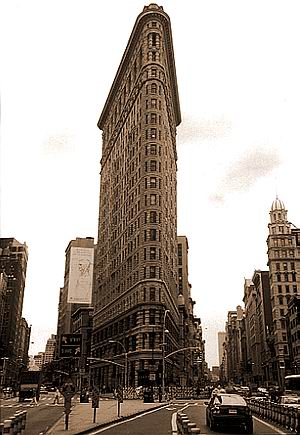
The Flatiron Building, Manhattan, New York
(Photo by Stephan Edelbroich)
This fine and elegant highrise building built in 1902 by
Daniel Burnham is of a rare composition and detailing.
Its appropriate urban location might justify its exceptional
vertical monumentality,-however what a contrast of scale and quality between this 20 floors high urban and architectural jewel
and the 110 repetitive floors high monotony of the former World Trade Center!
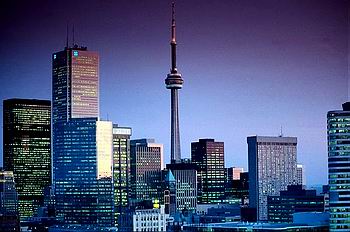
Urban Dialectics: The Skyscraper and the City
(Photo: Tripod Image Gallery)
"Alone an architecture which resigns from the
use of any grammar can produce pure solutions; but an architecture which abandons the use of any grammar does not speak a
language anymore."
Julius Posener
"Lectures on History of Architecture"
The Reconstruction of Manhattan without Skyscrapers
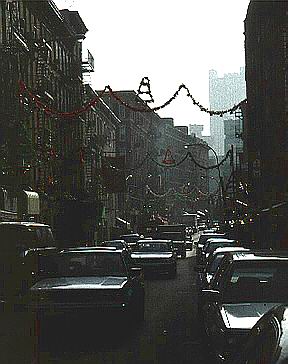
Little Italy, Manhattan, New York
(Photo by Stephan Edelbroich)
Some Thoughts on the Reconstruction of the World Trade Center Site
A reflection on the reconstruction of the
WTC referring to the virtues of traditional city-building as documented in New York's popular neighbourhoods Greenwich Village,
Soho, Little Italy and in its best examples of civic buildings, enhancing the comfort and happiness of the citizen rather
than the vanity and hubris of architects and speculators.
Here below the link to the complete illustrated
article:
RECONSTRUCTION OF MANHATTAN
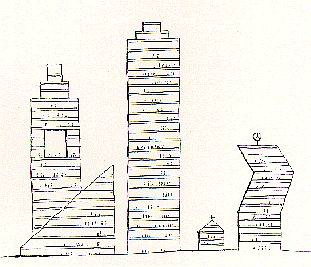
Skyscrapers:Typologies or Typological Aberrations
Sketch by Leon Krier
"The most beautiful and pleasant cities
which survive in the world today have all been conceived with buildings of between two and five floors. There is no ecologically
defensible justification for the erection of utilitarian skyscrapers; they are built for speculation, short-term gain or out
of pretentiousness."
Leon Krier
"The Future of Cities: The Absurdity of Modernism"
(Interview of Leon Krier by Nikos A. Salingaros in Planetizen)
To access the complete Planetizen article, please click on the link below:
THE FUTURE OF CITIES

Boston: Skyscraper in the city
(Photo: Tripod Image Gallery)
Following articles regarding the reconstruction of the WTC site in New York are developing substantial arguments for an intelligent
and responsible strategy of urban rebuilding.
They also engage in a necessary reevaluation and critique of skyscrapers
and about their inappropriateness within the context of new urban neighbourhoods!
"Tall Buildings"
A speech by The Prince of Wales
(Invensys Conference, London, 11th of December
2001)
The complete content of the speech "Tall Buildings" by The Prince of Wales can be accessed by clicking the link
below:
TALL BUILDINGS
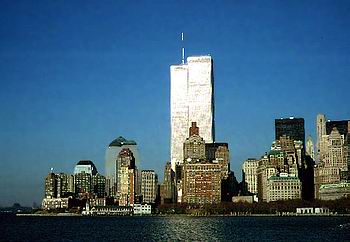
Skyline of Downtown New York with WTC
(Photo by Stephan Edelbroich)
"Curious thing, but solely the military
officials, together with the artists, have given some importance to the works of Le Corbusier, to his "Plan Voisin" and the
"Ville Radieuse". The lieutenant-colonel Vauthier wrote in 1930 in his book on the danger of air-attacks and the future of
the country: "Regarding large cities, our preferences will always be in favour of the system Le Corbusier."
Paul Fierens
(L'Architecture D'Aujourd'hui, Numero 3, Mars 1936)
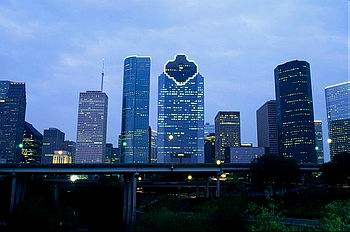
Vertical Sprawl and Horizontal Sprawl: two faces of
Modernism!
(Photo: Tripod Image Gallery)
"The idea of architecture and urbanism
as a discipline that is based on knowledge instead of being the endless battleground for competing and shifting opinions is
surely not a new one."
Demetri Porphyrios
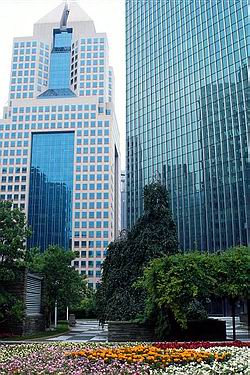
Skyscrapers for every Taste!
(Photo: Tripod Image Gallery)
"The ordered simplicity in the hands of
the great artist, may flower into a bewildering profusion, exquisitely exuberant, and render all more clear than ever."
Frank Lloyd Wright
"An American Architecture"
"The End of Tall Buildings"
James Howard Kunstler and Nikos A. Salingaros
This very passionate refutation of tall buildings shortly after the 11th of September tragedy was considered by many as a
sacrilegous provocation!
However since then the idea of rebuilding excessively high and technologically provocative
skyscrapers has not found a convincing majority and the arguments of "The End of Tall Buildings" have gained an
increasing attention among planners and developers!
To access the full content of this Planetizen Op-Ed feature,
please click on the link below:
THE END OF TALL BUILDINGS
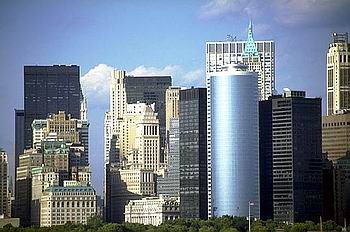
Historical highrise urban architecture and "pure" vertical
objects!
(Photo: Tripod Image Gallery)
"At issue are our everyday moral and political
experiences. Are we to believe that there are moral objectives of the true, the good and the beautiful, and social and political
objectives of the just, or are we to relegate the definition of such norms to chance or individual fancy?"
Demetri Porphyrios
|
